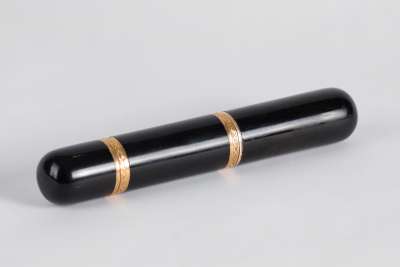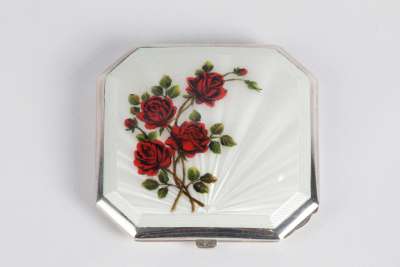The Chinese Child's Shoes are a pair of miniature footwear crafted from vibrant yellow silk, emulating the traditional Manchu style commonly found in adult shoes of the era. These shoes, originating from China around 1880, capture the essence of late Qing Dynasty fashion and are indicative of the cultural practices and attire of the time. With intricate embroidery and a design that mirrors the adult versions, they offer a glimpse into the historical significance and societal norms of the period. Each shoe features a slightly upturned toe and a platform sole, characteristic of Manchu footwear, symbolising the fusion of functionality and tradition.
Condition Report
The Chinese Child's Shoes exhibit wear consistent with their age, which is typical for items from the late 19th century. The yellow silk fabric, while retaining its vibrant colour, shows signs of fading and minor fraying along the edges, indicative of their historical usage and preservation journey. The embroidery, although slightly worn, remains largely intact, showcasing the craftsmanship of the era. The soles display some wear, which is expected given the age of the shoes. Overall, these shoes are in good condition for their period, with the wear adding to their historical authenticity and charm.
Dimensions
Weight: 51gm, Length: 13.5cm, Width: 5cm, Height: 4cm.
A Glimpse into Cultural Attire
These child's shoes were intended to mimic those worn by adult men in Manchu society, providing insight into how cultural attire was adapted for children. The design was not merely decorative but served as an educational tool, introducing young boys to the traditional footwear that they would eventually wear as adults. The shoes reflect the societal emphasis on cultural continuity and the importance of traditional attire in expressing identity and status within the community.
Traditional Manchu Style
The shoes are a fine representation of traditional Manchu footwear design, characterised by their platform soles and upturned toes. This style was both practical, offering protection from the elements, and symbolic, reflecting the social status and ethnic identity of the wearer. The use of silk and the detailed embroidery are hallmarks of Qing Dynasty fashion, showcasing the intricate artistry and cultural significance of textile work during this period. Such designs were often reserved for formal attire, highlighting the importance of footwear in ceremonial and everyday life.
Silk Craftsmanship
The construction of these shoes involved the meticulous crafting of silk, a fabric highly prized in Chinese culture for its beauty and durability. The embroidery, likely hand-stitched, features motifs that may hold cultural or symbolic meaning, crafted by skilled artisans. The platform soles were typically constructed from layers of fabric or paper, adhered together to form a solid base, demonstrating the ingenuity and skill of Qing Dynasty shoemakers. The choice of materials and the level of craftsmanship reflect the value placed on quality and tradition in children's attire.
Unknown Artisan
While the specific maker of these shoes remains unidentified, they are representative of the skilled artisans who specialised in textile and footwear production during the late Qing Dynasty. Artisans of this period were known for their ability to create intricate designs and durable products, often working within family-run workshops or for larger commercial enterprises. The craftsmanship evident in these shoes reflects the high standards and artisanal expertise prevalent in Chinese shoemaking at the time, contributing to the rich tapestry of historical fashion.
Collectors of Traditional Chinese Footwear
Antique collectors are often drawn to pieces like these Chinese Child's Shoes due to their cultural and historical significance. Collectors appreciate the insight they provide into the daily lives and customs of past societies, as well as the artistry involved in their creation. Such items are valued for their ability to convey stories of cultural identity and tradition. The appeal of collecting traditional Chinese footwear lies in preserving and studying the evolution of design, function, and symbolism in historical attire, offering a tangible connection to the past.














